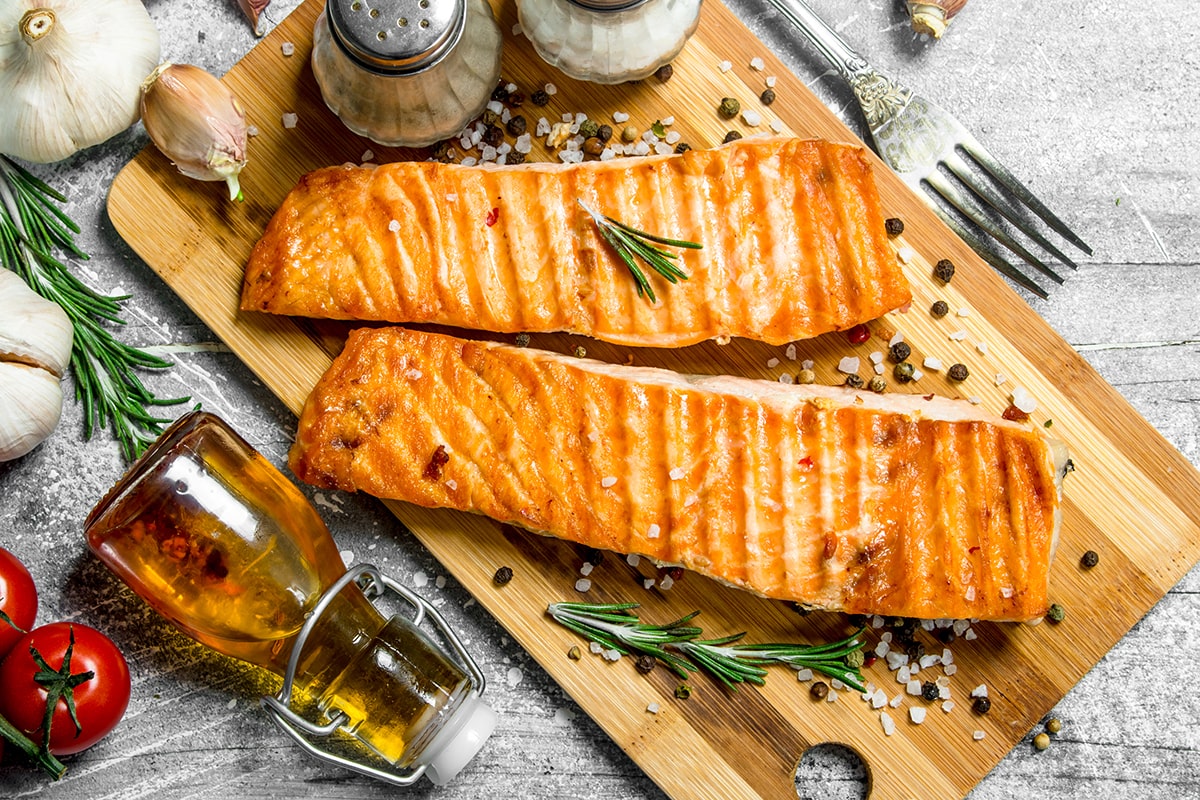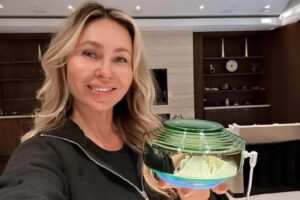Salmon, with its rich, buttery flavor and numerous health benefits, has rightfully earned its place as one of the most popular seafood choices worldwide. Yet, not all salmon are created equal. Today, we are faced with a critical decision every time we shop for this nutritious fish: Should we opt for farm-raised or wild-caught salmon? This choice impacts not only our health but also the health and sustainability of our planet’s aquatic ecosystems.
In this comprehensive guide, I’ll be drawing from my personal experiences and research as we explore the differences between farm-raised and wild-caught salmon and consider factors such as sustainability, nutrition, and taste. We’ll travel from the pristine waters of Alaska to the controversial fish farms of Norway, and examine the various species of salmon and their seasonal rhythms. By the end of this journey, you’ll have the knowledge you need to make an informed decision about the kind of salmon you choose to put on your plate.
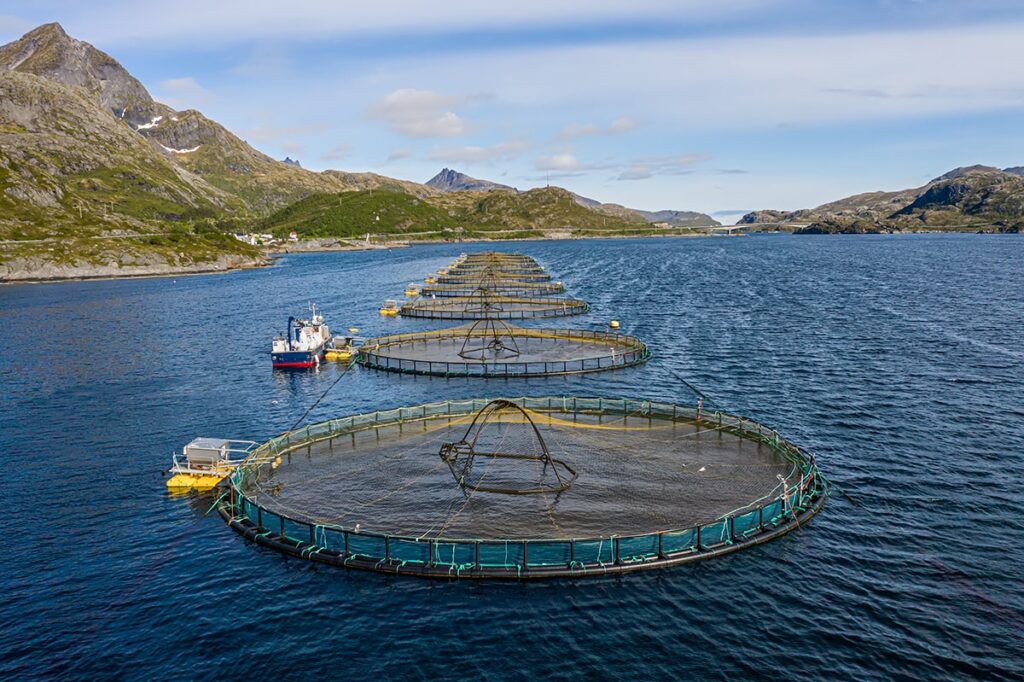
Farmed Salmon: Nutrition, Taste, and Sustainability
Farmed salmon is often portrayed as a convenient and affordable alternative to wild salmon. However, there are significant differences in their fat content, nutritional value, taste and environment impact.
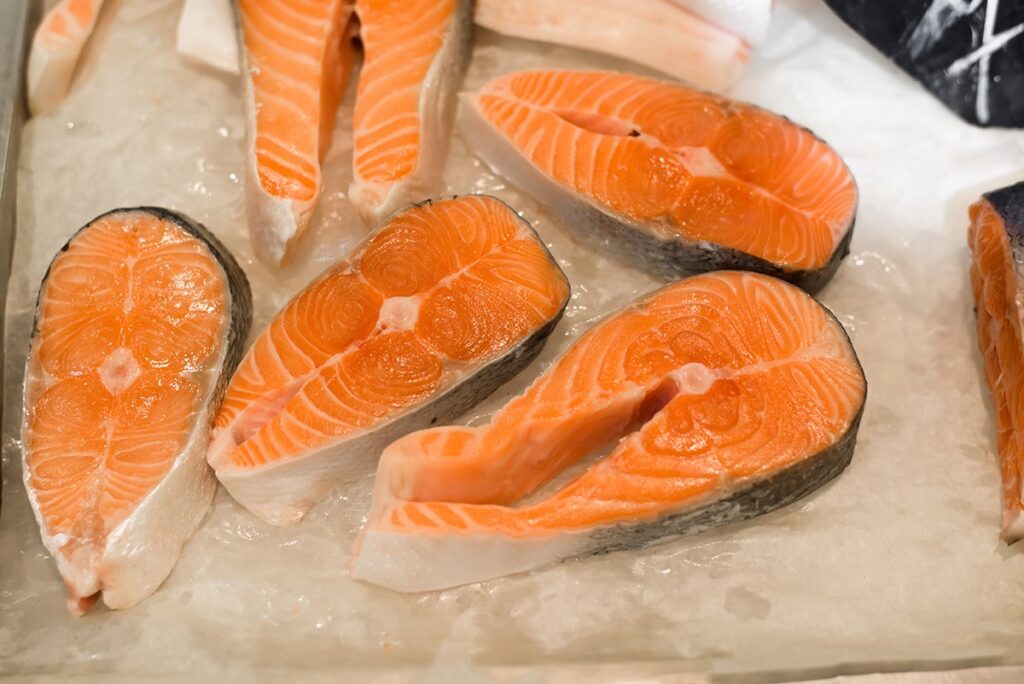
The Diet of Farmed Salmon
Farmed salmon are fed a mixture of plant proteins, minerals, and vitamins, as well as fish oils and proteins. The amount of fishmeal in salmon diets has decreased from being 70% of the diet in the 1980s to about 25% in 2017 [1]. The omega-3 levels in farmed salmon are dependent on what type of feed they eat [2]. Farmed salmon are intentionally fattened and therefore often accumulate more PCBs (polychlorinated biphenyls), which is one type of persistent organic pollutant [3]. To produce farmed fish such as salmon, they must be fed about three times their weight of wild-caught fish [4].
One of the primary concerns about farmed salmon revolves around what they eat. In aquaculture settings, they are often fed a mix of fish meal, cornmeal, or soy, supplemented with a range of vitamins, minerals, and occasionally antibiotics. This diet diverges considerably from what wild salmon consume in their natural oceanic environment, where they hunt smaller fish, invertebrates, and plankton. An unexpected outcome of this altered diet is the color of the salmon’s flesh, which tends towards grey rather than the vibrant pink associated with wild salmon. To combat this, the fish are often fed food laced with artificial coloring. Specifically, synthetic Astaxanthin, derived from petrochemicals, is used to give farmed salmon a more visually appealing, pink hue.
Fat Content and Essential Nutrients
Farmed salmon typically has a higher fat content than wild salmon, which might sound like a good thing since salmon fat is rich in omega-3 fatty acids. However, the type of fat in farmed salmon is often less healthy, with higher levels of saturated fats and omega-6 fatty acids. The right balance of omega-3 to omega-6 is crucial for our health, and farmed salmon can skew this balance.
Taste and Texture
In terms of taste and texture, wild salmon offers a flavor and firmness that many people find superior to farmed salmon. This is largely due to the differences in their diets. Farmed salmon are fed a diet of fish feed, often made from ground-up fish, while wild salmon eat a varied diet of shrimp, smaller fish, and other seafood, which contributes to their unique flavor.
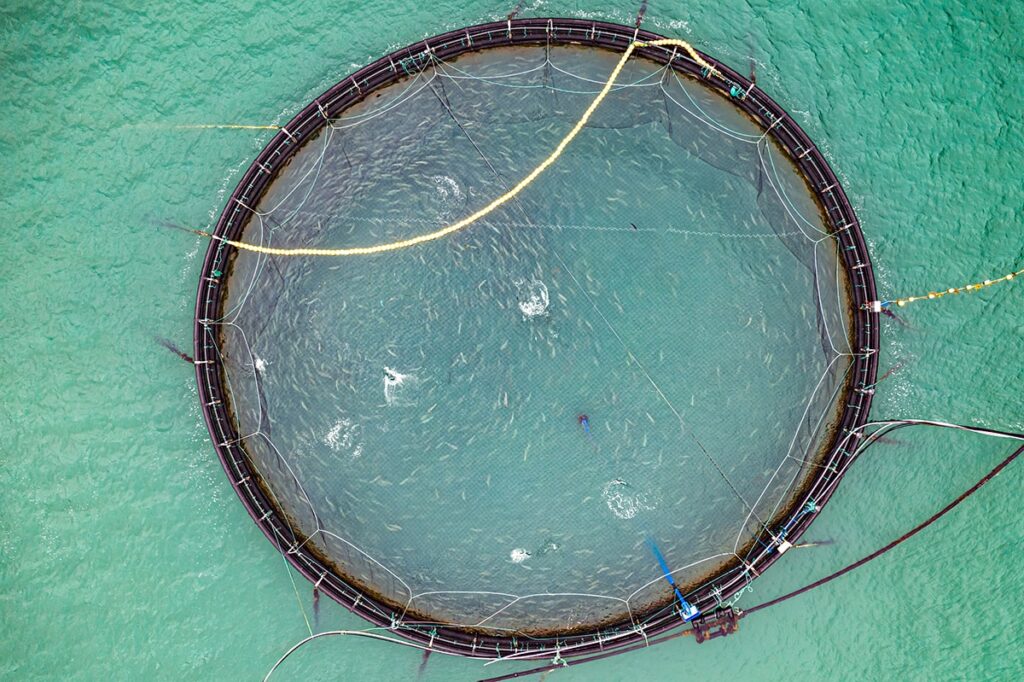
Sustainability and Ethics
The sustainability of farmed salmon is a contentious issue. On one hand, farming can reduce pressure on wild fish populations. On the other hand, farmed salmon requires a significant amount of resources, including feed and clean water. Additionally, the aim of fish farming is to achieve the maximum production of fishes and other animals for consumption at the lowest cost, which can lead to a disregard of animal welfare [5] and the use of antibiotics and other chemicals in fish farms can pollute surrounding waters.
Please note that not all fish farms are detrimental. Some farms actually do maintain excellent standards, fostering a quality habitat for the fish and prioritizing sustainable practices. It’s always beneficial to research a particular farm and understand their practices before purchasing their product. For instance, Scottish farmed salmon is reputed as among the best in the world, as documented in this article. Additionally, the Faroe Island salmon, praised in this blog, also stands out for its superior quality.
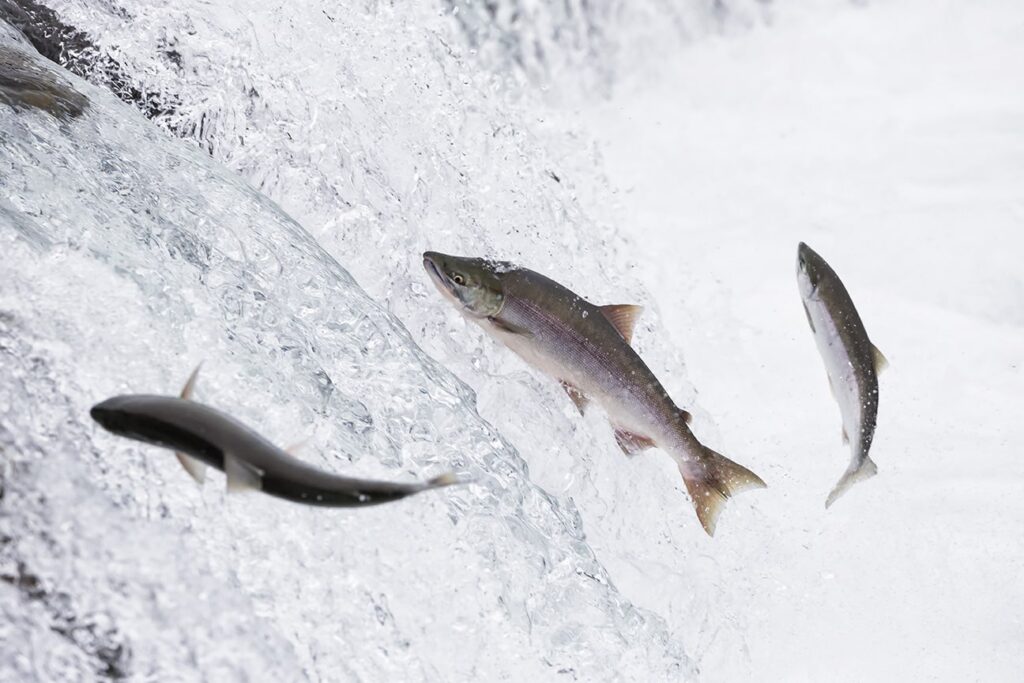
The Benefits of Wild Caught Salmon
Rich in Essential Nutrients
Wild salmon is a nutritional powerhouse, loaded with high-quality protein, essential nutrients, and omega-3 fatty acids. These fats are known for their health benefits:
Omega-3 fatty acids: Wild-caught salmon is rich in omega-3 fatty acids, which can reduce the risk of cardiovascular disease and promote healthy vision and brain development in children [6].
Protein: Wild-caught salmon is high in protein, which is essential for building and repairing tissues in the body [7].
Potassium: Salmon is a good source of potassium, which can help regulate blood pressure and reduce the risk of stroke [8].
Vitamin D: Wild-caught salmon is a good source of vitamin D, which is important for bone health and immune function [9].
Brain health: The omega-3 fatty acids found in wild-caught salmon can boost brain health and protect against conditions like Alzheimer’s disease [10].
Heart health: The omega-3 and -6 fatty acids combined with potassium greatly contribute to heart health [8]. Consuming salmon can help protect against heart disease by increasing levels of omega-3 fats, decreasing levels of omega-6 fats, and lowering triglycerides [7].
Wild salmon is also less likely to contain contaminants like pesticides, antibiotics, artificial colors and preservatives, which are often present in farmed salmon.
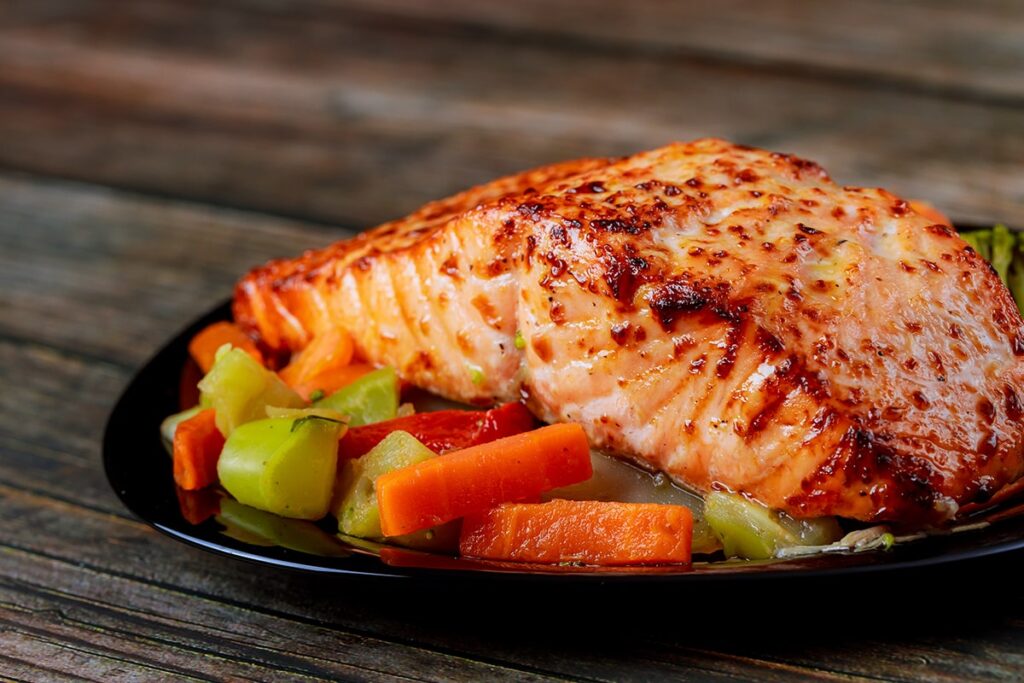
Superior Taste
Wild salmon’s diet consists of a variety of marine organisms, which contributes to a more complex and satisfying flavor compared to farmed salmon. The texture is also typically firmer, making for a more enjoyable eating experience.
Sustainability
Responsible wild salmon fisheries prioritize not only the health and longevity of the salmon species but also the wellbeing of the entire ecosystem. They respect the salmon’s natural life cycles, allowing for spawning and growth periods, which helps maintain population balance. This careful management ensures that wild salmon remain a renewable resource.
Also, sustainable fishing supports local communities. In places like Alaska, fishing is not just a livelihood, but a way of life passed down through generations. By choosing wild caught salmon, you’re supporting these local fishermen and their families, contributing to the sustainability of their communities.
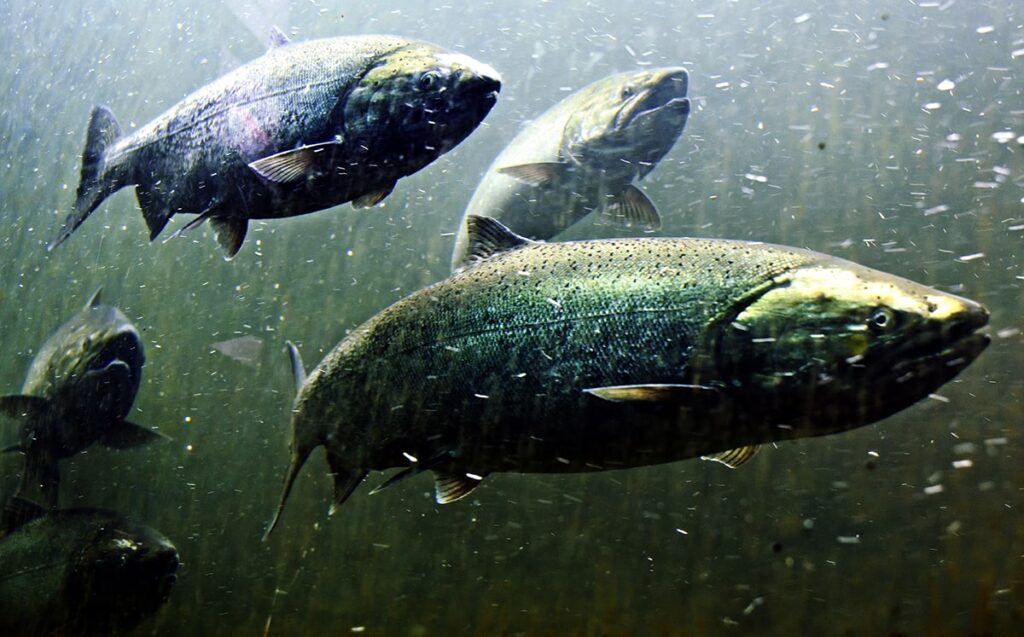
Understanding Different Salmon Species
Most people don’t know the differences between the various types of salmon, their origins, or their seasons. Salmon is not just salmon. There are numerous species, each with their unique taste profiles and nutritional benefits. Knowing where your salmon comes from, whether it’s in season and the fishing methods used to catch your salmon is super important.
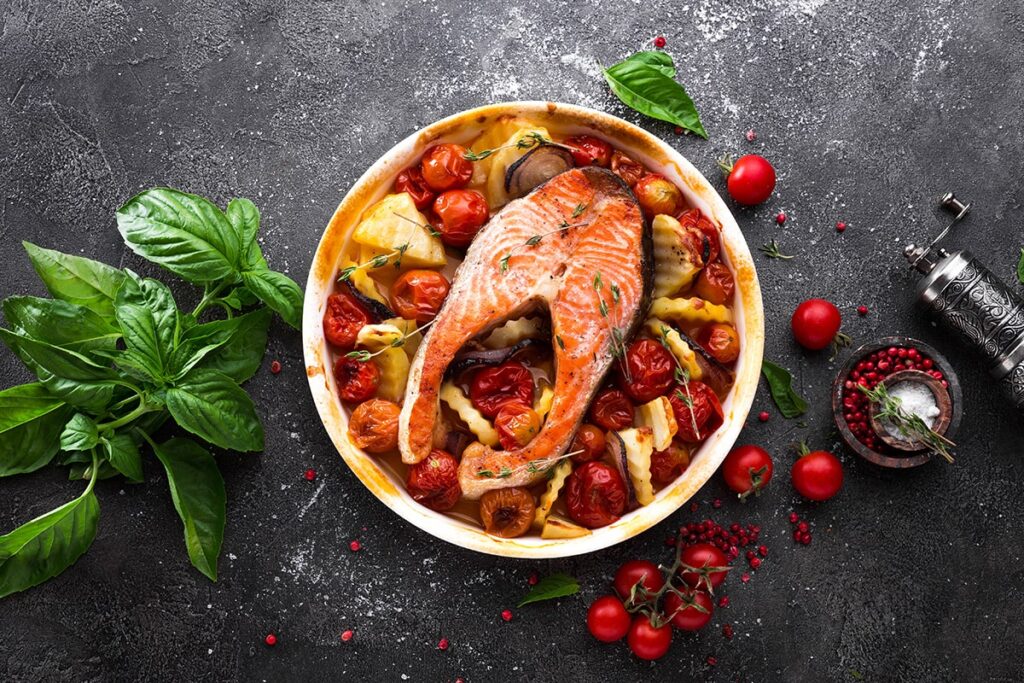
King Salmon (Chinook)
King salmon, also known as Chinook, is the largest of the salmon species. It’s renowned for its high fat content, which gives it a rich, smooth and “creamy” flavor. It’s also the most expensive kind of salmon. They can grow up to 58 inches long and can weigh up to 126 pounds. These salmon are highly prized due to their high fat content, which gives them that succulent texture. This is my personal favorite when it comes to taste.
King salmon are available year-round, but the best time to purchase them is during their peak season, which is in the summer months, from May to September. This is when the salmon are at their largest and their flavors are most robust.
Sockeye Salmon (Red Salmon)
Sockeye salmon, or red salmon, is known for its vibrant red-orange flesh and a unique, robust flavor. They are smaller than King salmon, averaging around 24 inches in length and weighing between 5 to 15 pounds. They are not as fatty as King salmon, but they are still quite rich in healthy omega-3 fatty acids. While its not my favorite, a lot of people love it.
Sockeye salmon are most abundant and at their best during the summer, with a peak season from June to August. This is when you’ll find them at their freshest and most flavorful.
Coho Salmon (Silver Salmon)
Coho salmon, also known as Silver salmon due to their silvery skin, are medium-sized salmon, averaging around 28 inches in length and weighing between 7 to 11 pounds. They have a more delicate flavor and lighter flesh color compared to King and Sockeye salmon. They are moderately fatty with a milder flavor, making them a versatile choice for various cooking methods.
Coho salmon’s peak season is later than other salmon species. They are at their best from July through December, with a peak in September and October.
Pink Salmon (Humpback Salmon)
Pink salmon, or Humpback salmon, are the smallest and most abundant of all salmon species. They average around 20 inches in length and weigh between 3 to 5 pounds. They have a light, delicate flavor and a lower fat content compared to other salmon species.
Pink salmon have a two-year life cycle, and their peak season is during the odd-numbered years, from July to September. This is the best time to purchase them for optimal freshness and taste.
Chum Salmon (Dog Salmon)
Chum salmon, also known as Dog salmon, are large salmon species, second only to King salmon in size. They average around 30 inches in length and weigh between 10 to 20 pounds. They have a lower fat content and a milder flavor compared to other salmon species and this makes them a little less sought after. Chum salmon’s peak season is from July to September.
New Zealand Ora Salmon
Ora Salmon, also known as the New Zealand King Salmon, is acclaimed as one of the best varieties of salmon in the world. It is farm-raised in the pristine waters of New Zealand, where the salmon are treated with utmost respect. Its peak season from late spring to early summer, typically spanning from May to August.
The eggs of Ora Salmon are nurtured in the crystal clear waters that flow from the Te Waikoropupu Springs near Golden Bay, verified as the cleanest waters in the world. The salmon are then transported to Marlboro Sound, living in sea farm pens with only 2% of the salmon in pens filled with 98% water, allowing for ample space to move. This careful raising process results in a consistently high-quality and flavorful salmon that is often referred to as the “Wagyu of the Sea” due to its superb taste.
The flesh of Ora Salmon is deep red, accented with marbled fat lines that contribute to its melt-in-your-mouth buttery flavor. The taste of Ora Salmon is unparalleled, offering a unique gastronomic experience that sets it apart from other varieties. [14]
Copper River Salmon
Copper River Salmon, a prestigious variant of the species, is renowned for its exceptional taste and rich texture. This type of salmon gets its name from the icy, fast-moving waters of Alaska’s Copper River where it’s caught. The unique habitat of these salmon forces them to store extra fat and oils, giving their flesh a rich, buttery flavor that’s truly unmatched. They’re highly prized and can be relatively costly due to their distinct, delectable taste.
Just like king salmon, Copper River salmon is available throughout the year. However, the prime time to purchase them is during their peak season, which typically stretches from May to September. This period sees the salmon at their largest sizes, with their flavors most concentrated and savory. This combination of size, flavor, and seasonality makes Copper River salmon a highly sought-after delicacy among seafood enthusiasts.
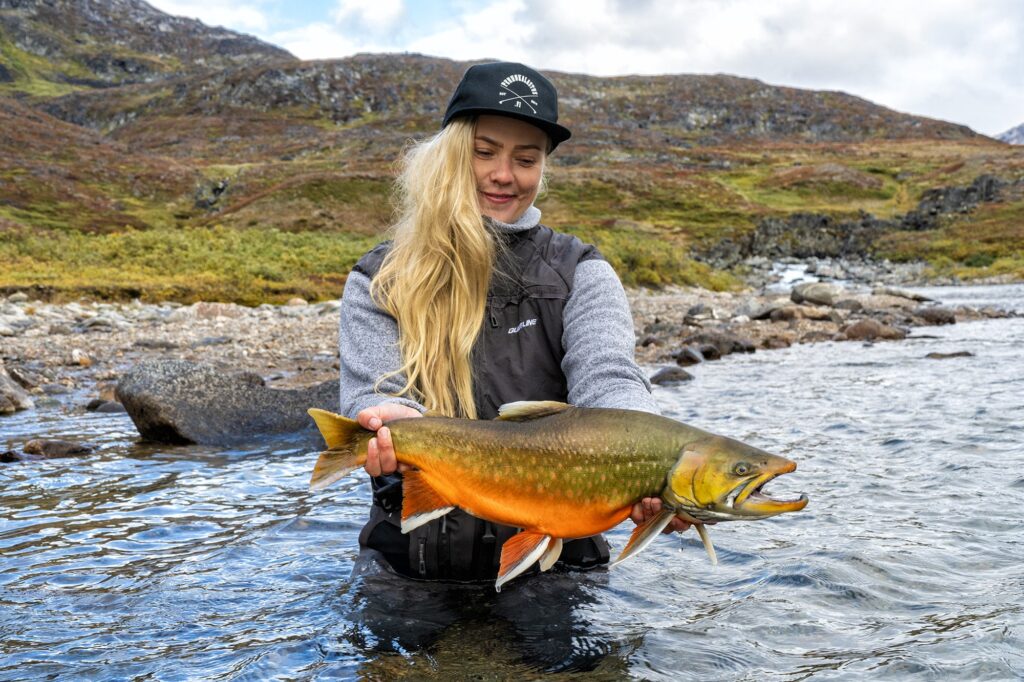
Source: Solid Adventures
Worth Mentioning
Arctic Char
Although not a salmon species, Arctic Char is a close relative and worth mentioning since it’s one of my favorite fish! Arctic Char is native to Arctic and sub-Arctic waters, like those of Iceland. They have a delicate flavor that is often described as a cross between salmon and trout. They are moderately fatty, and their flesh color can range from light pink to bright red.
Arctic Char is available year-round, but their peak season is in the winter months, from November to February. This is when you’ll find them at their freshest and most flavorful.
Freshwater Trout
Freshwater Trout, commonly found in pristine rivers, are renowned for their unique, mildly nutty flavor and delicate texture. They’re smaller than most salmon species, but what they lack in size, they make up for in flavor. The most common species, the rainbow trout, is particularly admired for its vibrant skin color and tender, flaky flesh.
Freshwater trout are available throughout the year, although the best time to catch them is during their peak spawning season, which is in the spring, from March to June. During this time, the trout are at their most active, and their flavor is most distinct. Trout’s versatility and accessibility make it a favorite for many including myself, whether baked, grilled, or pan-seared.
Smoked salmon
For the most authentic experience, look for smoked salmon made from wild-caught fish. I love a good quality smoked salmon from Alaska. A great addition to your breakfast or lunch!
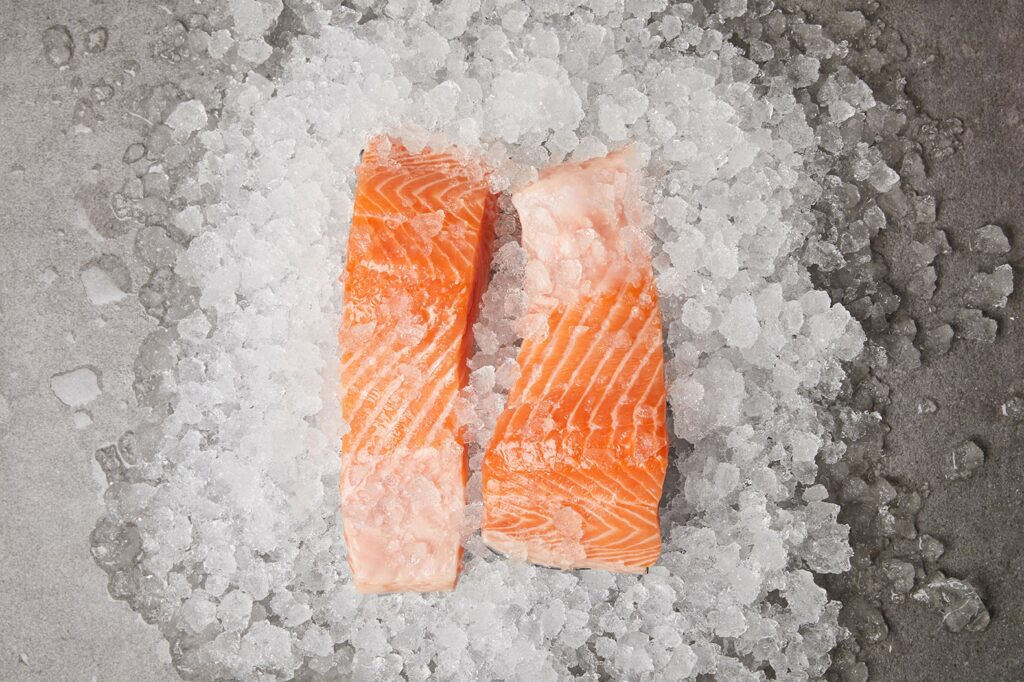
Flash Freezing: Preserving Freshness and Quality
When it comes to preserving salmon, flash freezing is the best method. This involves rapidly freezing the fish, often with dry ice, immediately after it’s caught. Flash freezing locks in the freshness, preserving the salmon’s taste, texture, and nutritional value.
Please note that frozen fish shouldn’t be kept for more than three months in the freezer because the quality begins to decline, and some of the health benefits may be reduced. This is something a lot of people don’t know about- eating your salmon in those first 3 months is crucial for getting the superior health benefits and taste.
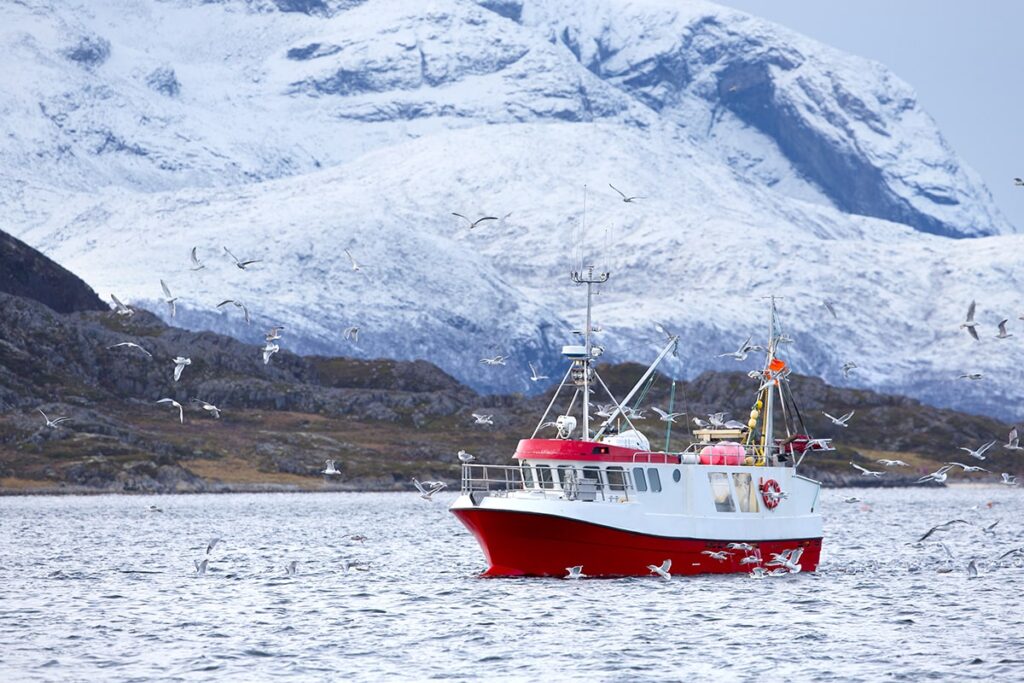
Subscription-Based Salmon
For a consistent supply of high-quality salmon, a subscription-based service is your best bet. I follow this model myself. When you use a subscription service, you will get a variety of salmon species that are in season, usually every 3 month. The fish will be freshly caught and ready to be cooked using your favorite cooking methods.
One of my favorite places to purchase salmon is Patagonia Provisions. Patagonia Provisions provides the best packaged seafood for on-the-go meals (not fresh fresh). They offer a selection of Portugal sardines and wild-caught Alaskan salmon, prepackaged and cooked, ready to be added quickly and conveniently to your lunch or dinner. This company is known for its commitment to environmental stewardship and offers a wide selection of wild-caught Alaskan salmon. Patagonia Provisions sources their salmon from reputable Alaskan fisheries that follow strict sustainability guidelines. They prioritize the well-being of the fish populations and the surrounding ecosystems, ensuring the long-term health of the fisheries.
Another company that I love to order from is Nordic Catch. Their fish is sourced from the pristine waters of Iceland, renowned for its exceptional seafood. Nordic Catch takes great pride in their sustainable fishing methods and meticulous processing techniques. They prioritize quality and traceability, ensuring that their fish is of the highest standard. By sourcing their salmon from Iceland, known for its stringent environmental regulations, Nordic Catch contributes to the preservation of Icelandic waters and supports the local fishing communities.
Unfortunately they just stopped shipments to Palm Springs due to the increasing heat out in the area because it could spoil but I really respect their commitment to delivering the freshest and highest-quality fish.
Another two companies that I love and recommend are Tanners Fish and Sitka Salmon.
Big Companies vs. Sustainable Fishing Practices
I stopped ordering from big companies because their fishing methods can be destructive to the environment and the fish populations. Small, local fishermen and farms often use more sustainable practices, such as respecting the spawning season and using less invasive catch methods. This not only helps maintain the balance of our oceans but also yields a healthier, tastier catch.
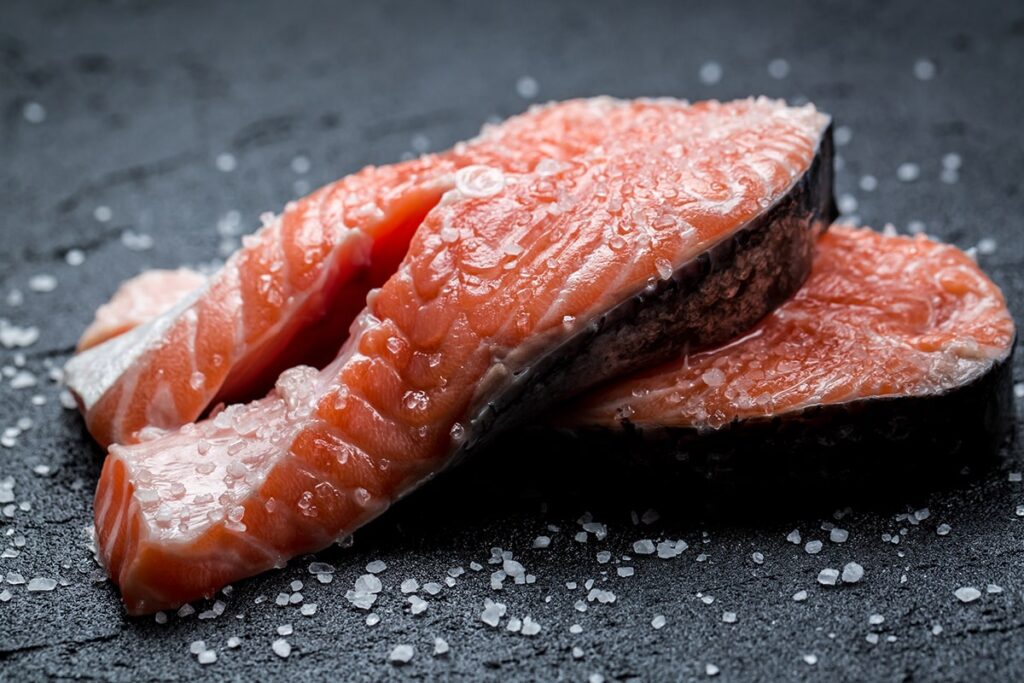
My Personal Journey with Salmon
I am a firm believer that everyone should be enjoying salmon at least once a week, but not just any salmon. I’m talking wild-caught salmon, and particularly from Alaska. If salmon is not in season in Alaska, they don’t ship it out. This ensures the fish are harvested at their peak for taste and nutrition, giving you the best salmon possible. I’ve been on quite a journey with this beautiful fish, and I’ve learned a thing or two along the way that I believe everyone should be aware of.
There’s a lot of hype about farmed fish, especially salmon, and yes, there are a handful of farms that produce salmon with commendable practices but if one fish gets sick in such a tightly packed environment, it can contaminate everything, creating an increased risk for human consumption. For me, farmed fish is a big no-no even though I do recognize that there are some farms who offer good habitat and quality products.

Asking the Right Questions at Restaurants
Eating out can be a bit of a gamble when it comes to sourcing your salmon. Every time I go out, I make it a point to ask if the salmon is wild or farmed. If the answer is wild, I dig deeper and ask where it comes from. If they can’t answer, I don’t order it. Most restaurants opt for farmed fish due to cost, which is a shame considering the superior taste and health benefits of wild-caught salmon.
Making Informed Choices
Whether you’re at a seafood market, grocery store, or restaurant, asking the right questions can make all the difference in the quality and sustainability of the salmon you consume. Always ask if the salmon is wild or farmed, where it was caught, and whether it’s in season. If the vendor or server can’t answer these questions, it might be best to choose something else.
A Conscious Choice
Navigating the world of seafood can be complicated, but by taking the time to learn about the different species and their seasons, and by asking the right questions, you can make informed and responsible choices. When it’s time to make a selection, remember that choosing wild caught salmon means supporting healthier oceans, rivers, and communities. It means opting for a food source that respects the balance of nature, from the moment the salmon is harvested from the ocean to when it’s cooked and eaten by humans.
Choose wild caught salmon – not just for the superior taste and nutrition, but also for the health of our planet and future generations.

Coaching Sessions
I am currently offering one-on-one coaching sessions to help individuals who may be facing challenges in achieving their goals independently. My goal as a coach is to guide and support you in every step of your journey, while also holding you accountable for the actions you take towards achieving your desired outcomes.
Whether you want to improve your health and wellness, establish better habits, or achieve personal and professional growth, I can provide you with personalized attention, a customized approach that suits your unique needs, and the necessary tools and motivation to help you reach your full potential and transform your life.
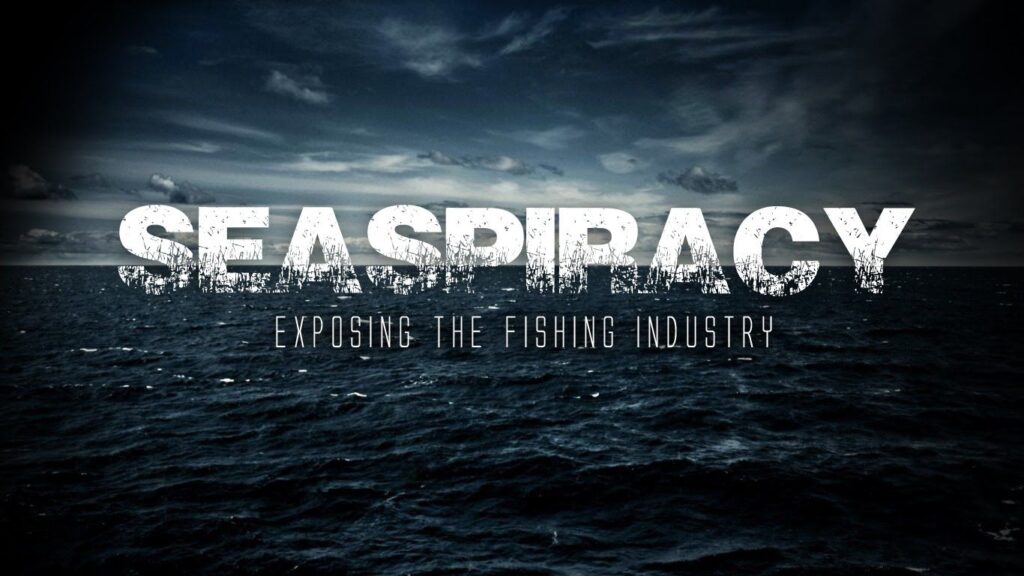
Watch Seaspiracy
Seaspiracy is a 2021 documentary film directed by Ali Tabrizi that examines the environmental impact of fishing [11][12]. The film challenges notions of sustainable fishing and advocates for ending fish consumption[13].
I strongly recommend everyone to take the time to watch the eye-opening documentary, Seaspiracy on Netflix. This groundbreaking film forever changed my perspective on seafood and had such a profound impact that I’ve ceased eating fish in restaurants almost entirely.
Seaspiracy paints a vivid and unsettling picture of the global fishing industry. It exposes the brutal and often unnoticed consequences of our insatiable appetite for seafood. The documentary highlights how this industry indiscriminately harvests fish from every corner of the globe, in the process causing collateral damage on a scale that’s hard to comprehend.
Innocent marine creatures, like dolphins and turtles, find themselves entangled in this lethal net of destruction. These majestic beings are the unintended victims of a business model built on unsustainable practices. It’s a grim reality, with these “pirates” not only plundering our oceans but also decimating their delicate ecosystem.
Beyond the environmental implications, Seaspiracy also delves into the food supply and chain aspects. It’s a topic of crucial importance that remains widely overlooked. Knowledge is power, and we, the public, need to be informed about what’s at stake here. We must understand how our seafood is sourced, the true cost of our consumption habits, and the role we play in this global predicament.
Seaspiracy is not just a documentary, but a call to action, a plea for change. Again, I wholeheartedly urge everyone to watch it, digest its message, and reconsider their seafood consumption habits. Our choices today will shape the health of our oceans tomorrow.
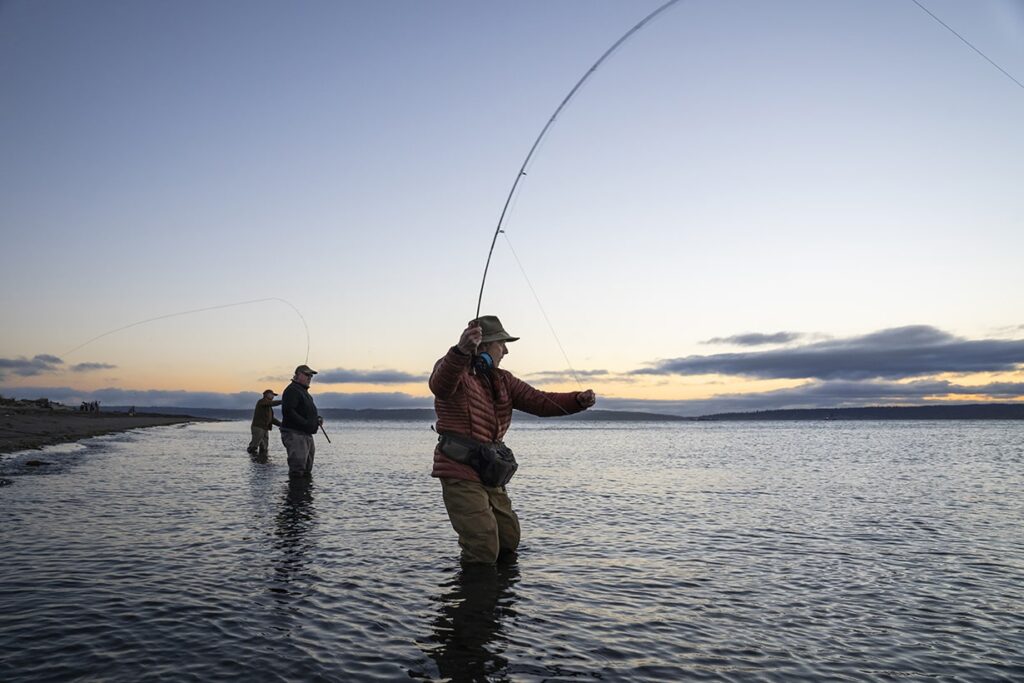
Conclusion
Navigating the waters of the salmon world can be complex, but armed with the right information, it’s easier to make choices that are beneficial for our health and the health of our planet. Opting for wild-caught salmon supports the preservation of our aquatic ecosystems and encourages sustainable fishing practices. It also guarantees a fish that has lived a natural life, free from antibiotics and artificial feed, offering you a healthier and more flavorful dining experience.
Remember, the power to effect change lies in our hands. Each time we choose wild-caught salmon, we are casting a vote for sustainable fishing practices and against harmful aquaculture methods. We are choosing to nourish our bodies with food that is clean, healthy, and rich in essential nutrients. And we are choosing to honor the natural cycles of nature, respecting each species’ unique season and rhythm.
This is the power of a conscious choice. This is the power of choosing wild-caught salmon.
FAQ
The main differences lie in their diet, lifestyle, nutritional profile, taste, and environmental impact. Farmed salmon are often fed a controlled diet and lead less active lives, which can result in a different nutritional profile and taste compared to wild-caught salmon. The farming of salmon can also have significant environmental impacts.
Yes, due to their natural diet and active lifestyle, wild-caught salmon often have a better balance of Omega-3 to Omega-6 fatty acids and are less likely to contain contaminants like pesticides and antibiotics, which can be found in farmed salmon.
Sustainable wild fishing practices help maintain the balance of marine ecosystems, whereas some fish farming practices can lead to pollution and other ecological issues. Thus, wild-caught salmon the the most sustainable choice.
Salmon thrive in cold waters, and Alaska offers an ideal habitat for them. Alaskan fisheries are also known for their sustainable fishing practices.
Yes, the salmon run typically starts in the springtime, around April or May, and runs into the autumn depending on the geographic area and species. The main runs take place in July and August.
Fresh, wild-caught salmon can be flash-frozen and stored in the freezer. It's best to eat frozen fish within three months to ensure optimal freshness and nutritional benefits.
There are five main species of Pacific salmon: King (or Chinook), Sockeye (or Red), Coho (or Silver), Pink, and Chum. Each species has its own unique season.
Ask the restaurant directly. If they can’t answer where the salmon is from or if it's wild or farmed, it's safer not to order it.
A subscription-based service, especially one that delivers seasonal catches, ensures that you get the freshest, in-season salmon right to your door.
Some large fishing companies may not employ sustainable fishing methods, which can have negative impacts on fish populations and the health of aquatic ecosystems.
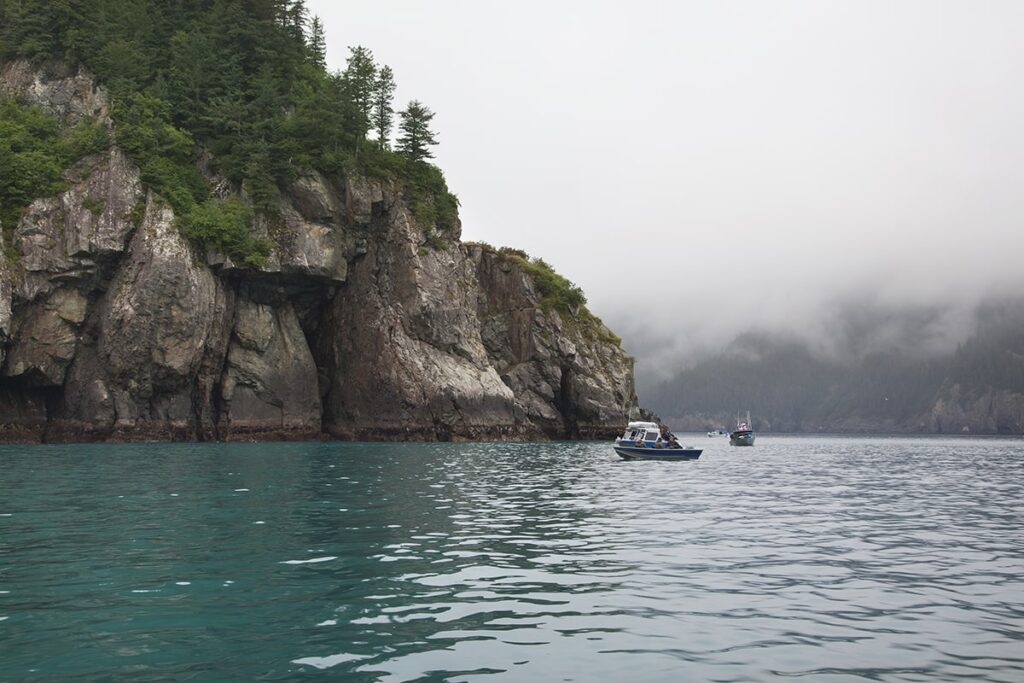
Resources
1. Feeds for Aquaculture | NOAA Fisheries
2. Farmed Salmon vs. Wild Salmon
3. Wild Caught Salmon vs. Farm Raised Salmon
4. The facts about farmed salmon you wish you didn’t know
5. Farmed fish could bring us cheaper food, but is it ethical?
6. Difference Between Wild and Farm-Raised Salmon – WebMD
7. Salmon: Nutrition, Health Benefits, and More
8. 12 Health Benefits Of Salmon For The Heart, Brain, And …
9. The Health Benefits of Wild Salmon
10. 5 Amazing Health Benefits of Eating Wild Salmon
11. SEASPIRACY | Netflix | OFFICIAL WEBSITE

With a positive approach and a motivation mindset, you will reach your health goals, no matter how hard they may seem at first. Learn more about my one-on-one coaching program here.
